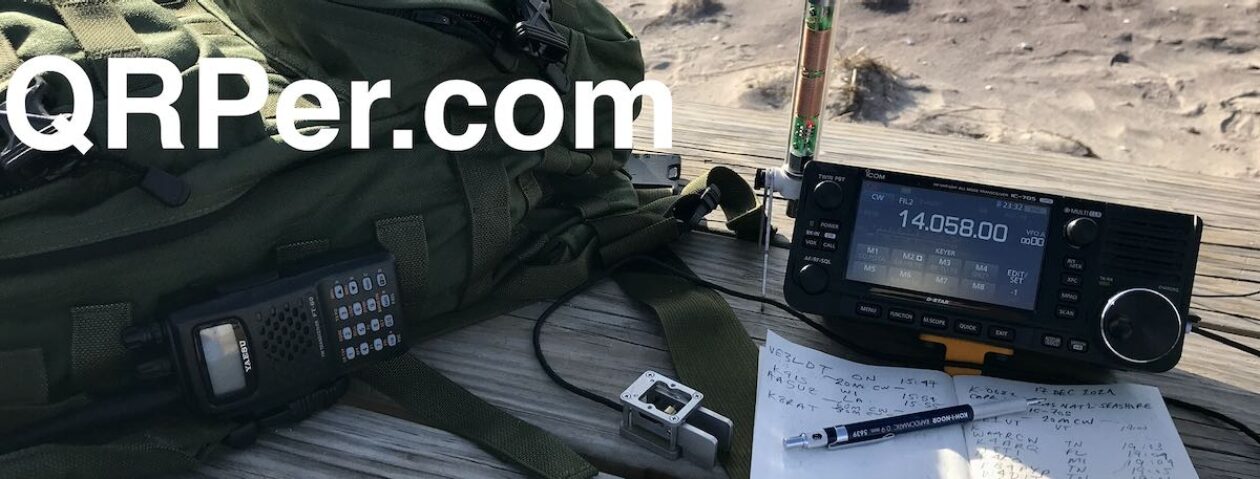Many thanks to Rand (W7UDT) who shares the following guest post:
Velcro, ergo; ergonomics…
by Rand (W7UDT)
Velcro is amazing. It’s so handy. There are so many uses, and creative solutions it provides us. It’ll stick this to that, and that to this. As field operators, it should be part of our kits.
Below are some examples of how I’ve used Velcro.
Question: How do you keep a Android tablet, a 3aH 12v DC pack, a QRP Labs QDX LoBander, all its cords & patches, plus an EmTech ZM2 tuner all nice and tidy? Velcro!
Here’s the old QDX kit…
Here’s the new (velcro’d) QDX kit, complete with EmTech ZM2 tuner, neatly attached on the back of the Tablet, with the QDX and DC Pack. It all fits in a zippered pouch, along with the EFλ/2 antenna, perfect for the QDX.
The new QDX kit even sits at a nice viewing angle, with all of the cords hidden from view. Ergo, ergonomics.
 Question: Where & how do you safely place your transceiver on a rugged SOTA/POTA activation, so it won’t get damaged?
Question: Where & how do you safely place your transceiver on a rugged SOTA/POTA activation, so it won’t get damaged?
How? Velcro! What makes more sense? A precarious rock, or the Molle patch on your pack?
 This is my QCX Mini ~ Forty, Velcro’d with two horizontally applied 1” strips, with short cords channeled between them. It secures the perfectly mated 3aH 12v TalentCell battery, to which I applied another velcro strip to hold fast the Palm Pico paddle. Also note the ‘D-shaped’ earpiece/speaker, on the BNC jack. It’s hung and velcro’d just above the paddle.
This is my QCX Mini ~ Forty, Velcro’d with two horizontally applied 1” strips, with short cords channeled between them. It secures the perfectly mated 3aH 12v TalentCell battery, to which I applied another velcro strip to hold fast the Palm Pico paddle. Also note the ‘D-shaped’ earpiece/speaker, on the BNC jack. It’s hung and velcro’d just above the paddle.
Since this photo, I’ve added three 2×4” (cut to fit) patches to the front, back and bottom of the QCX Mini & TalentCell, which neatly bundles this little QRP contraption and transforms it into a QRP wonder! Now it all fits in my hand, or attaches firmly to my pack. Dit dit dit daw! Velcro!
 A view from Zion NP, in the backcountry… late last Spring. Where my little transceiver tried to commit suicide.
A view from Zion NP, in the backcountry… late last Spring. Where my little transceiver tried to commit suicide.
Just sayin’… Velcro may be just the answer you’re looking for.
72 de W7UDT ID (dit dit)











































































